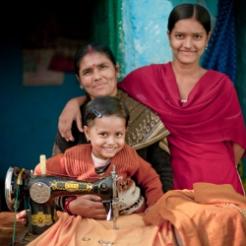The microfinance arm of World Vision is to refocus its efforts away from Eastern Europe and the Middle East in favour of Asia and Africa, as it has identified that it can help up to 30 times more children in those areas for the same money.
David Knights, VisionFund’s global director of marketing and fundraising, said Africa and Asia are “where the need is greatest and where we can have the greatest impact in improving the lives of children trapped in poverty”.
While the organisation currently impacts on the lives of just over two million children globally each year, by the end of 2014 it aims to increase this figure to 3.5 million.
Of VisionFund’s worldwide portfolio of over $380m, the Middle East currently holds almost two-thirds, with $218.4m of finance. Asia is the next largest financed region with $104.8m, while Africa trails behind with just $41m. Latin America has a portfolio worth $87.6m.
Knights told civilsociety.co.uk that by the end of VisionFund’s new three-year strategy – it is currently in year one – it will have moved its focus entirely away from Eastern Europe and the Middle East, by finding outside investors to take over its work there.
“We did some analysis to assess what the need was, to establish how many children we could help for every $1,000 that we put in. It’s a bit of a crude measure, but it works,” he said.
“We realised that for that $1,000 we could help 31 children in Africa, whereas in the Middle East and Eastern Europe we could only help one child.”
Knights said that the microfinance institutions (MFIs) that VisionFund channels money through in Europe and the Middle East had grown to be robust organisations of a significant size capable of being sustained by outside investors.
“Others will buy out our shares in those organisations and we can use that money to reinvest in Africa and Asia,” he said.
VisionFund conducts its own fundraising and also receives funds raised for microfinance projects by World Vision. For each dollar raised VisionFund is able to borrow debt against it equivalent to $4.
Knights acknowledged that the microfinance sector has come in for some bad publicity in recent years, with critics claiming that some MFIs are simply making a quick buck out of giving loans to poor families. But he defended VisionFund’s work as highly effective, saying: “What makes us different is that we are able to work alongside World Vision which provides healthcare, clean water and sanitation, while we provide the wherewithal to create economic growth. When you have those two together it’s a much stronger proposition.”
The new strategy will also see the organisation “taking a lead” on social impact and transparency reporting but Knights denied that the new geographical focus was driven by the increasing imperative to demonstrate evidence of impact to funders.
“If anything, reporting out of the Middle East and Eastern Europe is much easier than out of Africa,” Knights said. “We are making it harder for ourselves.”
Additional reporting by Niki May Young









